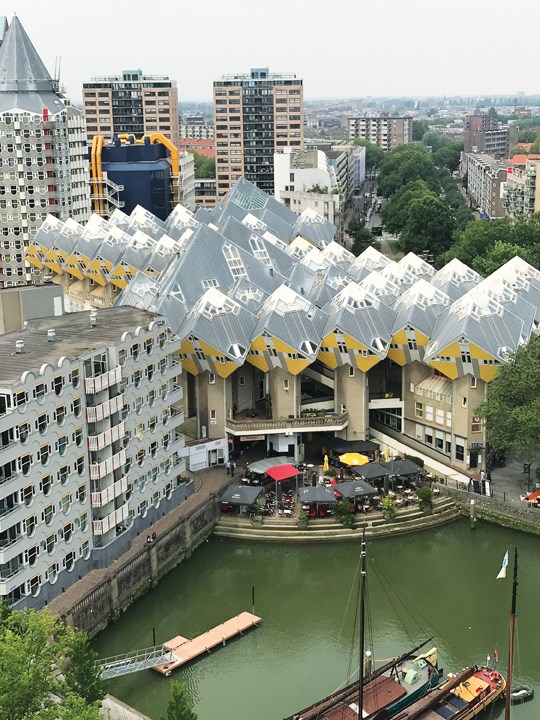Rotterdam, one of the largest port cities in Europe, was the scene of city wide destruction on May 14, 1940 when the German Luftwaffe bombed the city and fire spread from house to house. The Rotterdam Museum has a dramatic way of sharing the surprise and horror of the day for visitors visiting the city 70 years later. The story of the fire is told by a few artifacts that survived the blaze, although not wholly intact. A wedding dress, a sewing machine, a sealed tin of cookies all contribute to painting a picture of how regular people in a neutral nation were affected by total war.
It is not often that the chance comes along to spend two weeks in Europe, learning about the role played by Canadian soldiers in the liberation of the Netherlands at the end of WWII. A trip to Holland, land of cheese, chocolate, windmills and wooden shoes, is a fabulous way to study 20th century history.
While the Americans and British were pushing to cross German borders from the west and Russian troops were crossing from the east, Canadian troops were committed to breaking the German stronghold across the Netherlands. The Dutch had been under occupation since May 1940, and their country was transformed by Nazi rule. The Dutch were determined to survive, but survival meant many difficult choices: collaboration, resistance and/or keeping your head down, hoping to keep your own family safe.
Arriving in Rotterdam Central Station, you quickly notice the city has a different look than most Dutch urban centres. The central station was opened in 2014, built to transit high speed Eurotunnel trains, Dutch intercity trains, an underground network and an expected 320,000 passengers per day by 2025. The letters marking the central station are the same font as those found on the previous building, which upon closing in 2006 had been rearranged on the roof of the station to read Shed a Tear.
Rotterdam, the first stop on my tour, is a striking city today. Unusual architecture dotting the skyline today was made possible by a city rebuilt from the ground up after 1950. The easiest and quickest way to see the city is to jump on a bike, no helmet required. The old Holland America Line building, where transatlantic liners departed for several decades, stands proudly on the Rotterdam harbour, overseeing Amstel and Heineken drinking guests relaxing on the grassy promenade. Dinner options are easily accessible in Witte de Withstraat street nearby, or in the amazing Markthal. I was interested in taking the hot tub tug (hottug.nl) along the Nieuwe Maas river, but I’ve saved that treat for another visit!
Cycling, walking and bus tours are plentiful, but you might want to try getting around like the locals do, via tram. The historical tram tour of Rotterdam lets you hop on and off the 1930s refurbished tram, so you can get a taste of commuter life of pre-war Rotterdam.
Unlike Amsterdam, Rotterdam is a city that had to evolve after the destruction of war. A return to life as normal was not possible, with the city’s cultural and architectural heart ripped apart by bombs and fire. Fortunately, Rotterdam has melded its diverse history into a spectacular, tourist friendly city.



